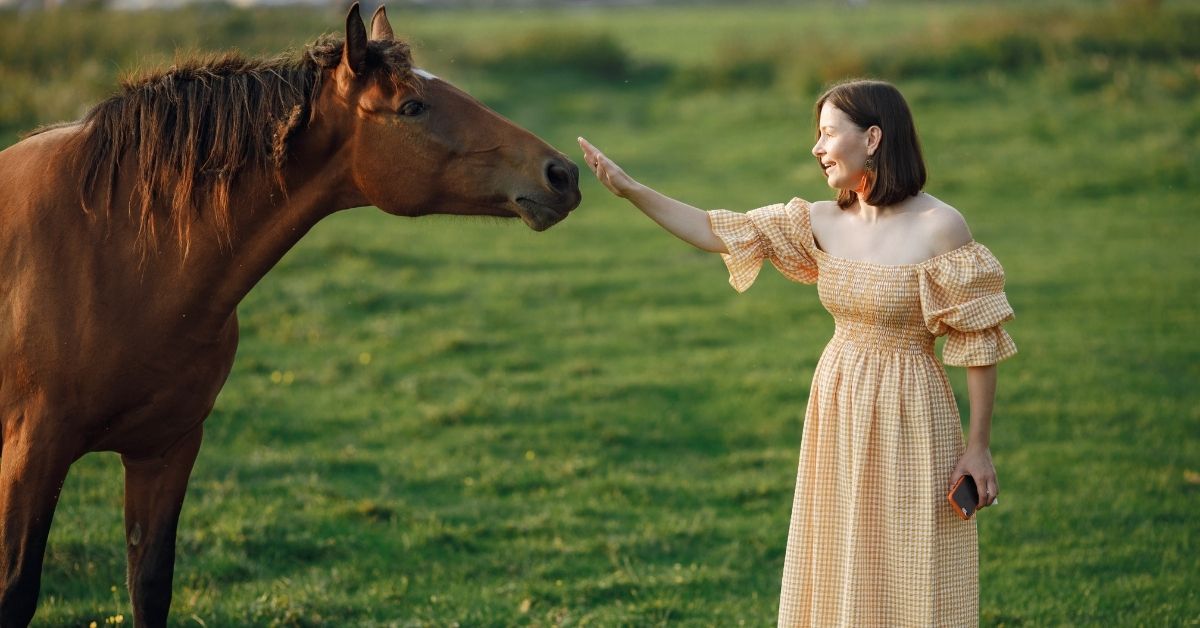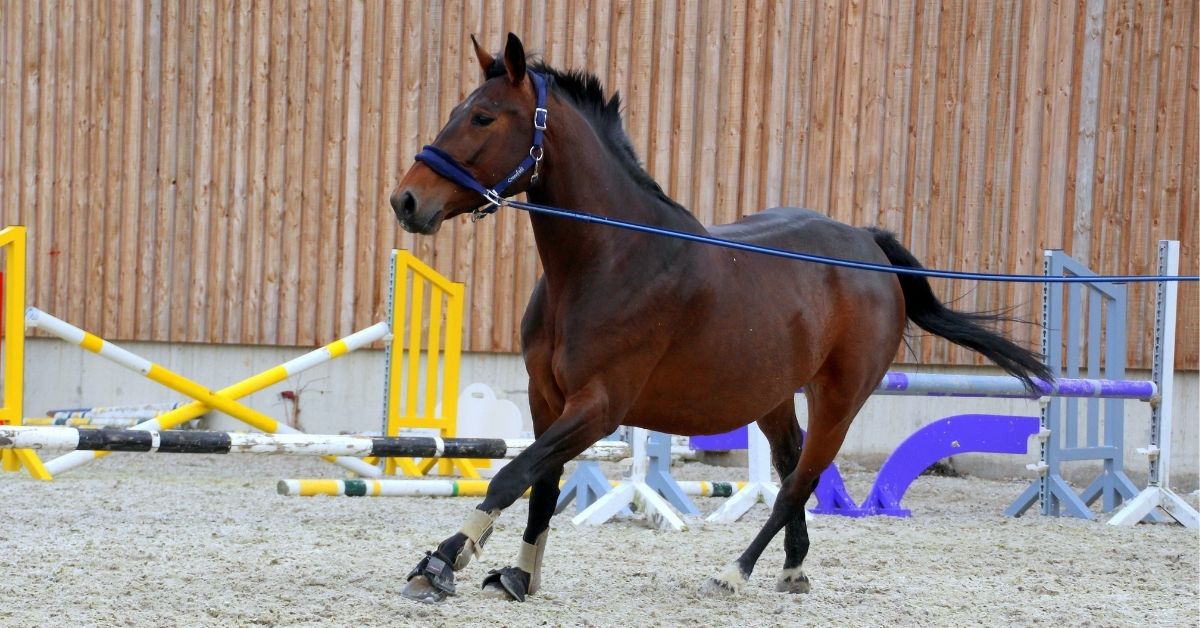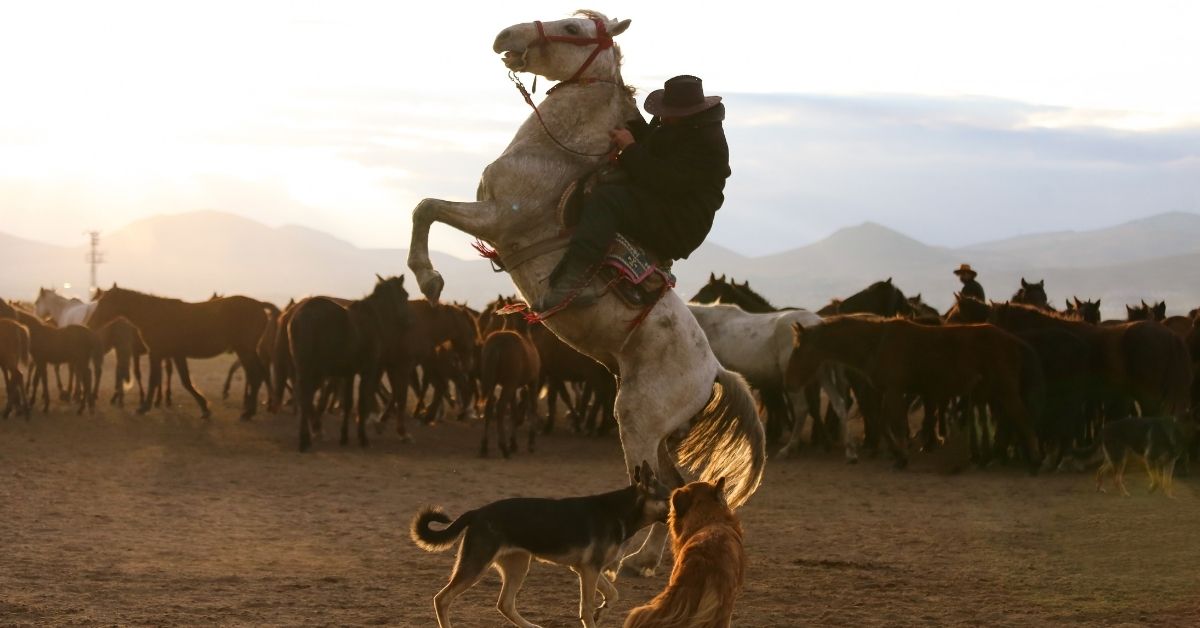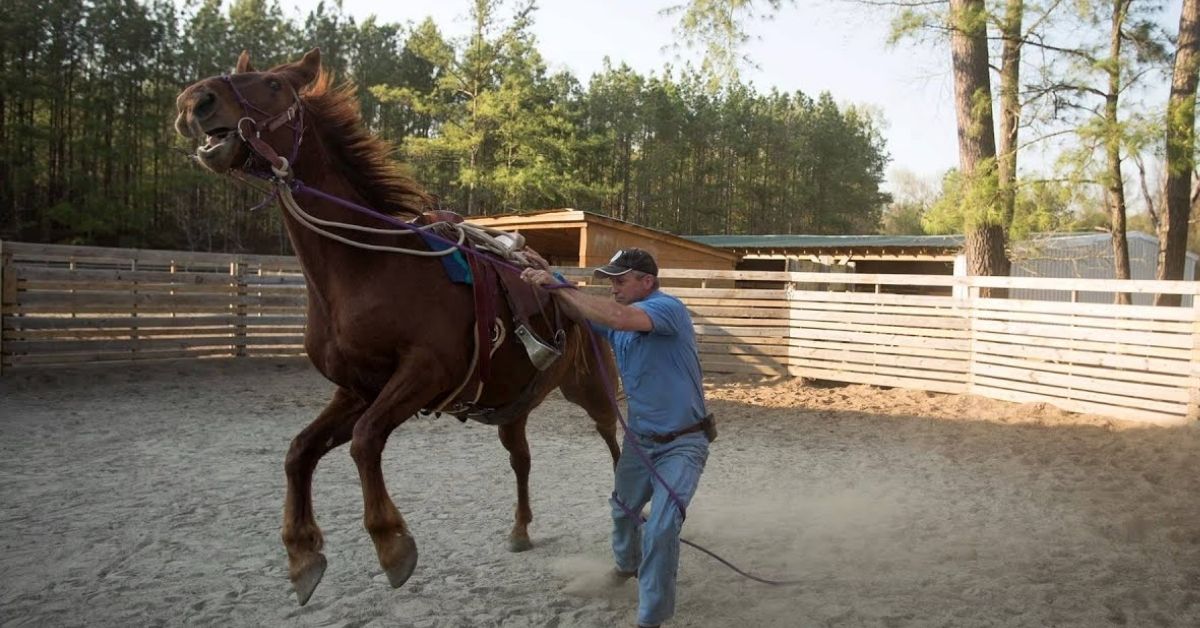
Taming a horse in real life needs the right technique. You are halfway there as you establish the bond between you and the equine.
Looking back in the past, nomadic Amazons and Scythians were the first humans to tame horses. Then, it became common to ancient people through their creative techniques.
People nowadays are lucky to have easy access to these knowledge. So, you can search for information on how to tame a horses anywhere anytime.
With good intentions, I made this article to save you time and effort in searching for taming a horse. It’s a pleasure to share my hands-on experience with my fellow equine lovers!
Step 1: Earning a Horse’s Trust
It’s the first step to taming a horse, so be patient and take it slow until you get the job done!
Approaching Your Horse
Never approach the horse from the rear. Since horses have wide-angle vision, they can’t see you from behind. Remember that you don’t want to surprise them.
Choose the right timing in doing so. If the horse bares its teeth or has drooping ears, you must back off first.
When you have the chance to approach the equine, speak to it with a soft voice. It’s to reassure the animal that you’re not a threat.
You can approach a horse from the side and pet its neck and the side of its face. Moreover, you should practice these behaviors not only in the first meeting but all the time.
Apart from how you approach, it would be best to refrain from sudden movements as a horse gets spooked. Also, keep away objects that can disrupt its calmness.
You should not let other animals and kids be around while you work on taming a horse. Equines get startled in a split second. When it happens, it can interrupt your session.

Show Love And Care
If the horse is still in the stage of not being comfortable with the human touch, you have to spend more time with it. Make it a routine so the horse will feel comfortable having you around. Here are some things you can do with your horse to show him love and care.
- Pat the back of your horse.
- Talk to your horse in a soft voice.
- Do not breathe heavily around your horse.
- Rub your hand over your horse’s face with love.
Giving Treats
Use grains, seeds, and fruits safe for horses, like carrots, to bribe the animal. Put the food on your open palm. The horse won’t only smell the food but your presence too.
Once the horse can recognize you, run your hands from its back to its hind end. Physical touch is one of the best ways to bond with your horse.
Grooming
Grooming is another reason the horse needs to be familiar with your touch. To deepen the bond between you and your horse, spend at least 10 minutes brushing its body daily.
Be gentle with your strokes as you continue talking in a low voice. Brush the whole body of the horse. So it won’t overreact when you put the saddle and girth.
Step 2: Lunge A Horse

Once your horse is comfortable when you’re around, you can put a halter on your horse, so you walk together. When the horse runs away when you stroll, let it. It will likely come back to you as it sees you as its leader who doesn’t pose a threat.
You may ask the horse to canter or pick up a trot. If it’s possible, you can ask it to gallop. Besides the pasture, you can also go on a walk in other places like the arena.
But there are some things that you have to pay attention to. Don’t wrap the lunge line so you can let it go when your horse gets spooked and bolts without notice. Let go of the lunge line so you won’t be in drag.
Step 3: Saddle A Horse
When your horse is familiar with your touch, you can saddle it. Before adding the saddle or rider’s seat, you have to brush the horse’s back. It’s to make sure that it’s free of dirt and grit.
Let the horse see and smell the saddle and pads before placing them on its back. This step is a must when it’s done for the first time.
Pay attention to the importance of getting the right saddle. Your comfort is at stake. If it’s too small, you’ll feel cramped. A seat that is too large causes discomfort.
When you place the saddle on your horse’s back, you have to ensure that the components are in the right place. The front side should be on the blanket close to the bottom of the horse’s neck.
See to it that the girth strap hangs on the horse’s forelegs. You only need to apply pressure when tightening this strap. Don’t jerk it, as you might startle the horse.
You may need an assistant when doing other things. Placing a bit will be challenging when you’re alone, as you can hit some teeth.
You’ll also appreciate a helping hand when adding the bridle and tying the cinch. But with practice, you can do these processes alone.
Step 4: Ride A Horse

A saddle is a must before riding a horse. You have to research the essentials of saddling or tacking to get started. Also, you may ask for advice or guidance from an experienced rider.
Before taking a horse for a ride, check its physical and emotional condition. You have to inspect its legs, hooves, and breathing rate.
You’ll know a horse in anxiety or fear by some signs. The animal has tense muscles, wide eyes, flare nostrils, and pinned-back or pointed ears. It’s good news when a horse approaches you because it’s curious about you.
The challenge of taming a horse doesn’t end when you’re on the back of the horse. There are times that it doesn’t follow your instructions.
What will you do then? Force won’t help you in this situation. You may follow where it goes or leads it in another direction. Let it move until it doesn’t notice that it obeys you.
Step 5: Respect From A Horse
Taming a horse is not only for the sake of riding. You can also gain the respect of a horse at the same time. Do it through discipline.
It’s inevitable that some horses have bad behavior. Hence, you have to be both kind and firm. Set boundaries on when to have fun or not.
You can make it happen by showing consistency in your expressions. For instance, a horse can nip on your clothing for treats. It’s its way of having fun, but it can hurt you in the end.
In this situation, there’s no need to shout. Say a firm ‘no’ and you can do it every time the horse misbehaves.
On the brighter side, you must appreciate a horse’s good manners. Praise it and give treats as rewards.
FAQs
Is it Legal to Tame a Wild Horse?

It’s not legal to tame a wild horse in most countries. In the United States, The Wild Free-Roaming Horses and Burros Act exists.
These animals are living symbols of the West’s historic and pioneer spirit.The legislation agrees with this belief. So, they have protection against harassment, branding, and death.
But it doesn’t mean you can’t tame and own a wild horse. You can as long as you don’t harm the animal.
The Bureau of Land Management has requirements, though. Interested individuals to tame and train horses before bringing them to their properties. You must spend a year on horse taming and training if you’re one of them.
How Long Does it Take to Tame a Horse?
It takes several months to a year to tame a horse. Those that are familiar with humans need a shorter time. Taming wild horses or mustangs may take a longer period.
Conclusion
When taming a horse, a slow approach is ideal. Rushing and forcing a horse won’t help. It also requires patience while the animal is in the learning phase. You have to be gentle so you can gain its trust.
Besides being kind and loving to your horse, you must be firm in some circumstances. Misbehaving is a common thing among equines. You have to be consistent with your actions. So, your horse will know when you correct its misconduct.
